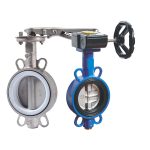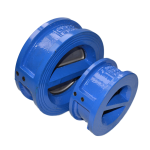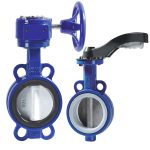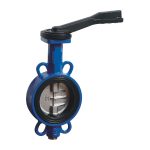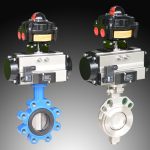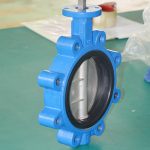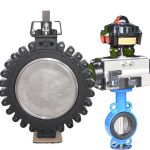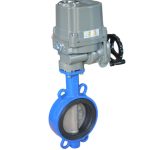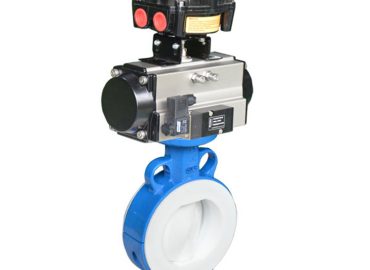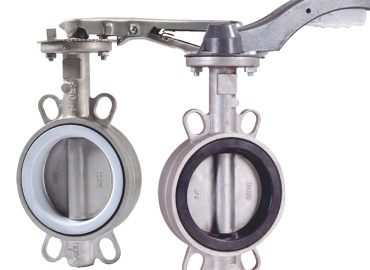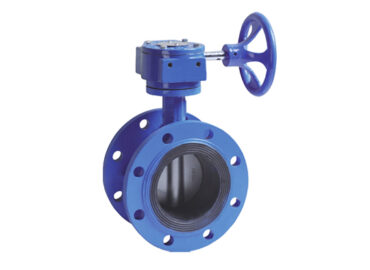The Essential Guide to Selecting the Best Wafer Butterfly Valve Type
Are you in the market for a wafer butterfly valve, but don’t know where to begin your search? With so many valve types available, it can be overwhelming to decide which one will best suit your needs. That’s where this essential guide comes in. In this guide, we’ll cover the important factors to consider when selecting a wafer butterfly valve type, the different types available, and a comparison of each. By the end of this guide, you’ll have a clear understanding of which wafer butterfly valve type is the best choice for your given situation.

Introduction
Whether you’re a seasoned engineer or a novice just starting to learn about wafer butterfly valves, this essential guide is for you. Our guide is designed to help you navigate through the various options and factors when it comes to selecting the best wafer butterfly valve type for your application. We’ll provide an in-depth analysis of the different factors to consider, such as pressure rating, end connections, and flow rate. Additionally, we’ll provide a comprehensive comparison of each wafer butterfly valve type, including the concentric, eccentric, and high-performance varieties. By the end of this guide, you’ll be able to confidently select the best wafer butterfly valve type for your project.
Explanation of what a wafer butterfly valve is
A wafer butterfly valve is a type of quarter-turn valve that is commonly used to control the flow of liquids or gases. It is known for its lightweight construction and space-saving design, which makes it a popular choice in a variety of industrial applications. The valve consists of a disc that rotates inside the valve body, controlling the flow of fluid through the valve. It is called a “wafer” valve because it is sandwiched between two flanges and held in place with bolts or screws. This design allows for easy installation and maintenance, and makes it possible to replace the valve without disrupting the surrounding pipe system. Wafer butterfly valves are available in a range of sizes and materials, making them versatile and adaptable to many different applications.
Importance of selecting the right valve type
Selecting the appropriate valve type is critical to the success of any industrial or process application. The right valve type can improve system efficiency, enhance safety, and minimize maintenance requirements. On the other hand, selecting the wrong valve can result in poor performance, equipment failure, and costly downtime. When it comes to wafer butterfly valves, selecting the appropriate valve type is particularly important because of their unique design and the potential for their use in a wide range of applications. By carefully considering the various factors that impact valve performance and understanding the differences between the available valve types, users can be confident in their selection and ensure uninterrupted system operations.
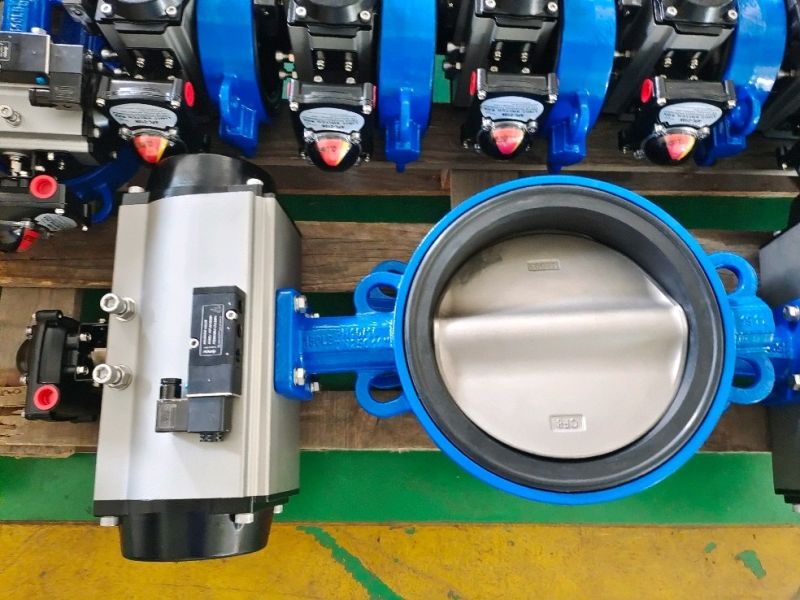
Factors to Consider When Selecting a Wafer Butterfly Valve Type
When selecting a wafer butterfly valve type, there are several important factors to consider. First and foremost, it is important to consider the pressure rating of the valve. The pressure rating specifies the maximum amount of pressure that the valve can withstand without compromising the integrity of the valve or causing system failure. Similarly, it is important to consider the temperature range in which the valve will be used. Temperature range can impact valve performance and durability, as certain materials can become brittle or compromised when exposed to high or low temperatures.
Another critical factor to consider is the end connections of the valve. End connections will dictate how the valve interfaces with the surrounding pipe system and can impact installation and maintenance requirements. It is also important to consider the disc and seat materials, as they will impact the resistance of the valve to wear, abrasion, and corrosion.
Working medium is another critical factor to consider when selecting a wafer butterfly valve type. Depending on the application, the working medium can be a liquid, gas, or a combination of both. Different fluids can have varying characteristics, such as viscosity, density, and acidity, that can impact valve performance. It is important to select a valve that is compatible with the working medium to ensure long-term reliability and efficiency.
Finally, flow rate is an important factor to consider when selecting a wafer butterfly valve type. Flow rate will dictate the size of the valve needed and will ensure that the valve can handle the required volume of medium throughput without causing system failure.
By carefully considering these factors when selecting a wafer butterfly valve type, users can be assured that they are selecting a valve that will provide the needed performance, reliability, and efficiency for their application.
Pressure rating
Pressure rating is one of the most important factors to consider when selecting a wafer butterfly valve type. The pressure rating of the valve determines the maximum amount of pressure that the valve can safely withstand without causing system failure. It is important to select a valve with a pressure rating that is compatible with the system’s operating pressure to ensure safe and reliable operation. Pressure ratings can vary depending on the valve type, size, and material. It is also important to note that the pressure rating of a valve can be affected by factors such as temperature, fluid type, and flow rate. It is important to consult with a professional when selecting a valve to ensure that the valve’s pressure rating meets the specific requirements of your application. Failure to select a valve with an appropriate pressure rating can result in catastrophic system failure and significant financial losses.
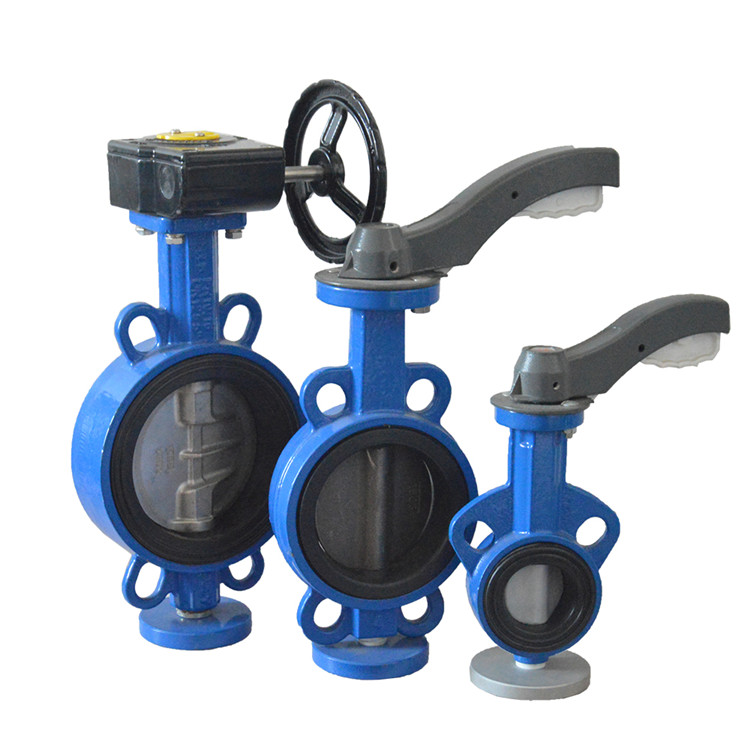
Temperature range
Temperature range is another important factor to consider when selecting a wafer butterfly valve type. The temperature range specifies the minimum and maximum temperatures at which the valve can operate safely and effectively without compromising the valve or causing system failure. It is important to consider temperature range because exposure to extreme temperatures can cause valve materials to weaken, expand, or contract, impacting the valve’s performance and longevity. Different materials have different temperature tolerances, so it is important to select a valve with materials that are compatible with the temperature range of the system. Failure to consider temperature range when selecting a wafer butterfly valve type can result in premature valve failure or other system issues, potentially leading to costly downtime or safety issues.
End connections
End connections are another critical factor to consider when selecting a wafer butterfly valve type. The end connections of the valve specify how the valve interfaces with the surrounding pipe system. This can impact installation and maintenance requirements, as well as the compatibility of the valve with the system’s piping. Standard end connections for wafer butterfly valves include flanged or lug style connections, but other connections, such as butt-weld or grooved connections, may also be available. The type of end connection required will depend on the specific requirements of the system where the valve will be installed. It is also important to consider the size and type of flanges used in the connection, as these can impact the overall strength and compatibility of the connection. Careful consideration of end connections when selecting a wafer butterfly valve type can help to ensure that the valve will operate effectively within the system and minimize maintenance requirements.
Disc material
The disc material is another important factor to consider when selecting a wafer butterfly valve type. The disc is a component that rotates inside the valve body and is responsible for controlling the flow of fluid through the valve. The disc can be made from a variety of materials, including stainless steel, carbon steel, or exotic alloys, each with their own unique advantages and disadvantages. Disc materials can impact factors like corrosion resistance, wear resistance, and chemical compatibility with the working medium. It is important to select a disc material that is compatible with the specific properties of the working medium and the temperatures and pressures within the system. Failure to consider disc material when selecting a wafer butterfly valve type can result in valve damage or system failure, potentially leading to safety issues or costly downtime.
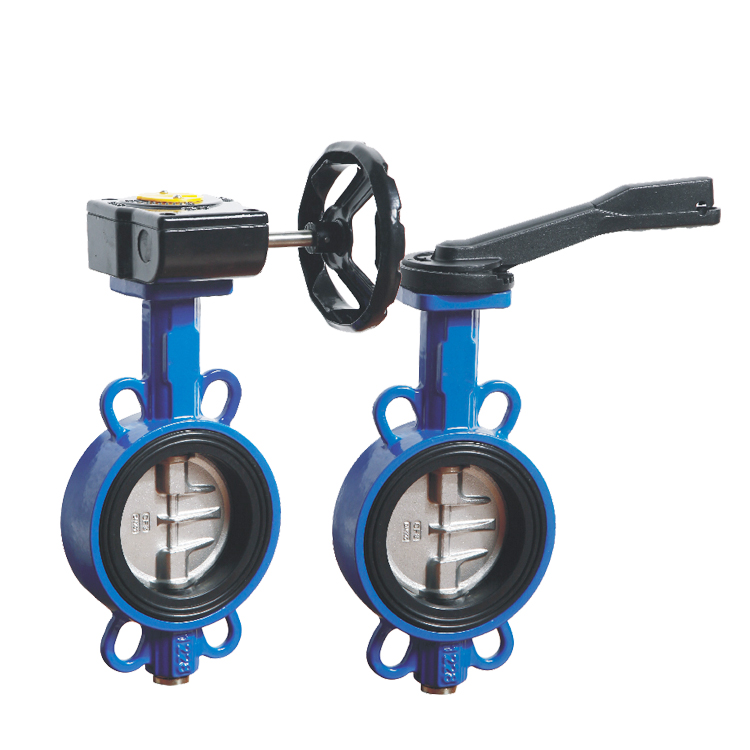
Seat material
The seat material is another critical factor to consider when selecting a wafer butterfly valve type. The seat is the part of the valve that provides sealing between the disc and the valve body. The material of the seat can impact the valve’s ability to seal and resist wear, erosion, and chemical attack. Seat materials can be made from a variety of materials, including rubber, PTFE, or metal, each with their own unique advantages and disadvantages. It is important to consider the specific properties of the working medium and the temperatures and pressures within the system when selecting a seat material. Selecting an appropriate seat material for a wafer butterfly valve can help to ensure reliable and safe valve operation, minimizing the risk of system failure or downtime.
Working medium
Working medium is another critical factor to consider when selecting a wafer butterfly valve type. The working medium specifies the type of fluid or gas that will be flowing through the valve. Different fluids or gases have different characteristics, such as viscosity, density, and chemical composition, which can impact the valve’s performance and durability. It is important to select a valve that is compatible with the specific properties of the working medium to prevent wear, corrosion, or damage to the valve. Different valve types and materials may be better suited for specific working mediums, so it is crucial to consult with a professional when selecting a wafer butterfly valve type. Selecting a valve that is not compatible with the working medium can result in premature valve failure, damage to other system components, or safety issues, potentially leading to costly downtime or harm to personnel.
Flow rate
Flow rate is a critical factor to consider when selecting a wafer butterfly valve type. Flow rate is a measure of the volume or mass of fluid that will be flowing through the valve at any given time. It is important to select a valve that can handle the required flow rate without causing system failure or other issues. Valve size, disc design, and seat material can all impact the valve’s ability to handle flow rate effectively. Choosing a valve that is too small or inadequate to handle the required flow rate can lead to system instability or pump failure. On the other hand, selecting a valve with a larger size than necessary can result in increased costs and reduced efficiency. By considering flow rate requirements when selecting a wafer butterfly valve type, users can ensure that they are selecting a valve that is the correct size and design for their application, providing reliable and efficient system operation.
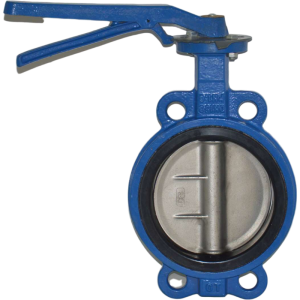
Types of Wafer Butterfly Valves
There are three primary types of wafer type butterfly valves: concentric, eccentric, and high-performance valves. Concentric wafer butterfly valves are the most commonly used type of wafer butterfly valves, with the disc centered about the valve stem, ensuring even sealing around the perimeter of the valve. Eccentric butterfly valves feature a disc offset from the valve stem, allowing for improved sealing capabilities, reduced wear, and increased durability in high-temperature applications. High-performance butterfly valves are designed to endure high pressures and temperature fluctuations while still maintaining precise control over flow.
They are used in critical applications, including in the petrochemical, refining, and power industries. These valves typically have a triple offset design, which allows for tighter sealing and improved resistance to wear and corrosion. The type of valve selected will depend on the specific requirements of the application, such as temperature range, pressure rating, and flow rate. Consulting with a professional can help users to determine which type of wafer butterfly valve is appropriate for their specific use case. By selecting the appropriate valve type, users can ensure the long-term reliability and efficiency of their system, minimizing the risk of system failure or downtime.
Concentric wafer butterfly valve
Concentric wafer butterfly valves are the most commonly used wafer butterfly valve type. They are known for their simple design, which includes a disc that is centered around the valve stem, ensuring even sealing around the perimeter of the valve. The concentric design allows for easy installation and maintenance, as the valve can be easily removed and replaced without disrupting the surrounding pipe system. Concentric wafer butterfly valves are available in a range of materials, including stainless steel and thermoplastics. They are used in a variety of industrial applications, including HVAC, water treatment, and chemical processing. Concentric wafer butterfly valves are typically used in low-pressure applications, because they do not provide the same level of sealing as other types of butterfly valves. However, they are often preferred for their cost-effective design and ease of maintenance.
Eccentric wafer butterfly valve
Eccentric wafer butterfly valves have a slightly different design than concentric valves, with the disc offset from the valve stem. The eccentric design allows for improved sealing capabilities, reduced wear, and increased durability in high-temperature applications. Eccentric wafer butterfly valves are known for their ability to handle higher pressures than concentric valves, making them an ideal choice for applications where pressure is a critical consideration. These valves are used in a wide range of industries, including chemical processing, gas and oil, and HVAC systems. Eccentric wafer butterfly valves are available in a variety of materials, including stainless steel, carbon steel, and aluminum bronze. Because of their increased sealing capabilities and use in high-pressure applications, eccentric wafer butterfly valves are often more expensive than concentric wafer butterfly valves, but are often considered essential in industrial applications where performance, durability, and safety are top priorities.
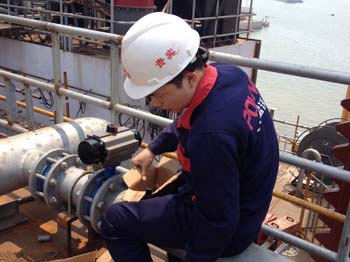
High-performance wafer butterfly valve
High performance wafer butterfly valve are designed for applications requiring high sealing capabilities, long-term durability, and reliable performance. These valves feature advanced seal designs that are better able to withstand high temperatures and pressure than conventional wafer butterfly valves. They are available in a variety of materials, including stainless steel, thermoplastic, and aluminum bronze, allowing them to be used in a wide range of industrial applications. High-performance wafer butterfly valves also feature metal-to-metal or rubber seating rings that provide an additional layer of protection against leaking or corrosion. These valves are often more expensive than other types of wafer butterfly valve due to their added features and materials but can often be the most reliable option for critical applications where performance is key.
Comparison of Wafer Butterfly Valve Types
Wafer butterfly valves are commonly used in industrial applications due to their ability to handle high pressures, reduce installation time and space, and provide reliable performance. There are three main types of wafer butterfly valves – concentric, eccentric, and high-performance – each with its own unique features and benefits. Concentric wafer butterfly valves are the most common type as they allow for easier installation, lower costs, and can be used in a wide range of temperatures and pressures.
Eccentric wafer butterfly valves feature a slightly different design with the disc offset from the stem which makes them more reliable for high-pressure applications. High-performance wafer butterfly valves offer an additional layer of protection due to their metal-to-metal or rubber seating rings, making them ideal for critical applications such as those involving hazardous materials or extreme temperatures. In terms of cost, eccentric wafer butterfly valves tend to cost more than concentric models while high-performance valve typically fall somewhere in between the two. Ultimately, the best solution depends on the requirements of the application so it’s important to consider all types of wafer butterfly valve before making a decision.
Features of each type
Concentric wafer butterfly valves offer easier installation, lower costs, and can be used in a wide range of temperatures and pressures. Eccentric wafer butterfly valves feature a disc offset from the stem which is designed for high-pressure applications. High-performance wafer butterfly valves have metal-to-metal or rubber seating rings that provide an additional layer of protection against leaking or corrosion. These valves are often more expensive but can be the most reliable option when performance is key.
Pros and cons of each type
Concentric wafer butterfly valves are the most cost-effective and provide the simplest installation, making them a great option for many applications. However, concentric valves are not as reliable under high-pressure conditions and may not be suitable if longevity is an important factor. Eccentric wafer butterfly valves are more expensive but provide better performance at higher pressures. They also require a bit more complex installation due to their offset design. High-performance wafer butterfly valves offer superior protection against leakage and corrosion, however, they can also be the most expensive option of the three.
Use cases for each type
Concentric wafer butterfly valves are most suitable for general industrial applications such as water, air, and fuel applications. Eccentric wafer butterfly valves are the preferred choice when high-pressure applications like steam or oil lines are involved. Finally, high-performance wafer butterfly valves are ideal for hazardous and corrosive media as they provide an additional layer of protection against leakage or corrosion.
Conclusion
When selecting a wafer butterfly valve, it’s important to consider the application that you need it for and whether concentric, eccentric, or high-performance valves will be best suited. Concentric wafer butterfly valves are the most cost-effective option but may not suit applications requiring higher pressure and longevity. Eccentric valves provide better performance at higher pressures but require complex installation. High-performance valves offer superior protection against leakage and corrosion but also come with a higher cost. By considering these factors and doing your research, you can ensure that you select the right type of wafer butterfly valve for your requirements.
Recap of important factors to consider
When selecting a wafer butterfly valve, it’s important to consider the application that it’ll be used for. Additionally, you should assess whether concentric, eccentric, or high-performance valves are best suited for the job. The cost of the valve will also play an important factor in your decision-making process. Finally, complex installations and superior protection from leakage and corrosion should be taken into account when making your choice.
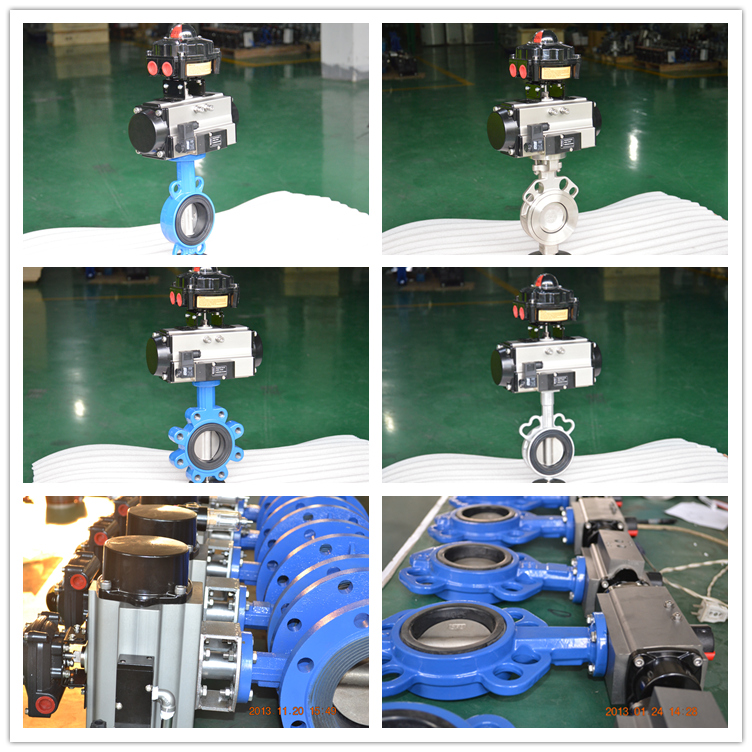
Suggestions on which valve type may be best for certain use cases
Depending on your application, different types of wafer butterfly valves may be more suitable. For low-pressure applications, concentric valves are usually the most cost-effective option. Complex installations may require eccentric valves, as these provide superior performance at higher pressures. High-performance valves offer the best protection against leakage and corrosion but come with a higher cost. By weighing these factors carefully, you can make sure to select the best type of valve for your specific needs.
Importance of consulting with a professional to ensure the best valve selection
Ultimately, it’s important to consult a professional when selecting a wafer butterfly valve. A professional can advise you on the most suitable valve type for your application and provide guidance on any additional requirements or safety protocols that should be followed. Consulting a knowledgeable expert will help ensure that you select the best valve for your needs and avoid costly mistakes.


